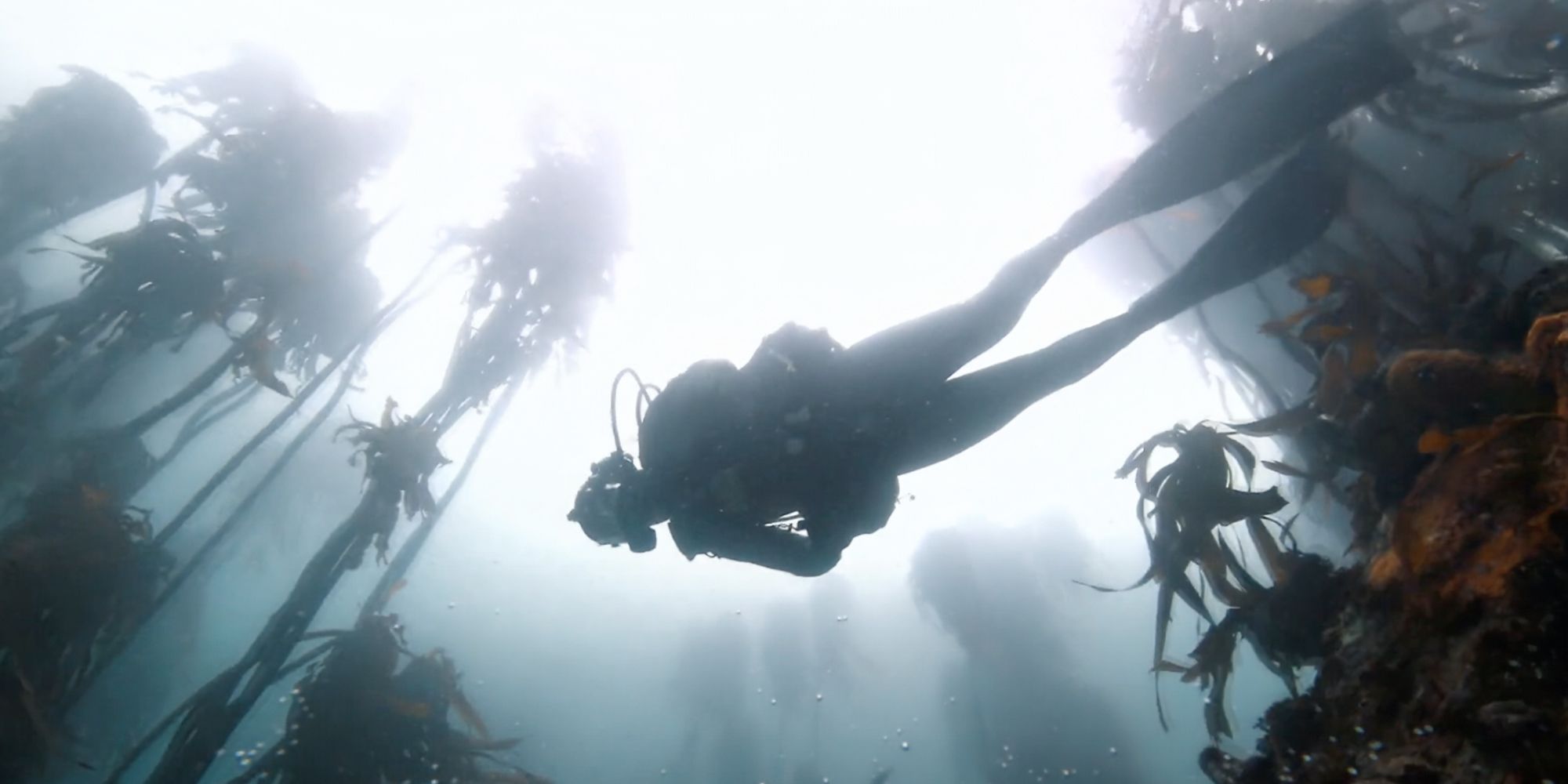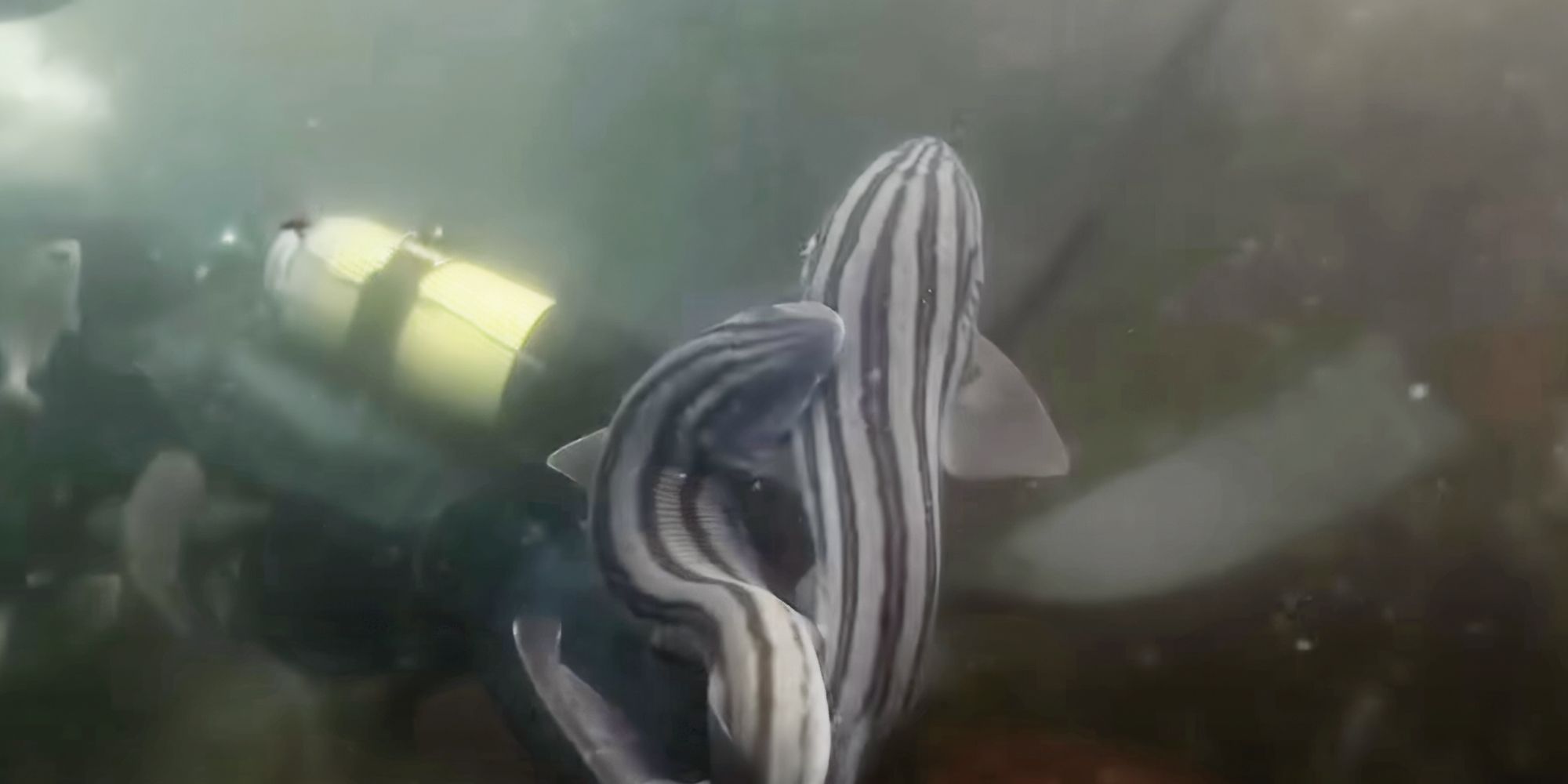Summary
- Alien Sharks: Strange New Worlds takes viewers to the coast of South Africa in search of unique animals, including the sevengill shark, and features never-before-seen deep-sea videography and unlikely finds.
- Forrest Galante, a conservationist and adventurer, leads the show and is involved with Colossal Biosciences, a company focused on de-extinction.
- The show highlights underrepresented organisms like the pajama shark and the wedgefish, in addition to the sevengill. Galante shares his favorite moments from the show, including catching the elusive wedgefish and the affectionate behavior of the striped pajama sharks.
Discovery’s Shark Week is back with exciting new programming like Alien Sharks: Strange New Worlds. This new iteration of the Alien Sharks series takes viewers to the coast of South Africa in search of unique animals including the sevengill shark, a rare species of shark named for its distinguishing feature. The program also features never-before-seen deep-sea videography, unlikely finds, and more.
Alien Sharks: Strange New Worlds is led this time around by Forrest Galante, a conservationist and adventurer known for his work seeking out supposedly extinct species. Galante has hosted a number of television shows in the past including Extinct or Alive and Nature’s Strangest Mysteries: Solved. Galante is also involved with Colossal Biosciences, a company seeking to reintroduce extinct animals like the dodo bird, thylacine, and wooly mammoth into the ecosystem through de-extinction, and is confident the viability of the company’s approach will be made clear late in 2023.
Forrest Galante spoke with FilmmakerFocus about alien sharks, de-extinction, and more.
Forrest Galante on Alien Sharks: Strange New Worlds
FilmmakerFocus: In watching Alien Sharks, you [clearly] went through a lot of steps and a lot of places to find a sevengill. You famously hunt for extinct species or species close to extinction; how did this hunt stack up to some of your other expeditions in terms of length and/or difficulty?
Forrest Galante: It was definitely less difficult than others, especially because with Extinct or Alive, and some of the other stuff I do looking for extinct species, the journey is often the destination. The likelihood of us finding something is always really, really slim, even though we have been successful quite a number of times. [With] this one I think the destination was always finding the sevengill. We knew we had to do it, and I knew that they were still there, but what was unlikely was finding them in a manmade harbor. I don’t think that was ever at the top of our consideration going into that, so it was very unique.
But as far as a stress meter goes, it was severely reduced compared to some of the stuff we do. We slept in hotels every night, and we were out on the boat during the day, so it was just a lot easier than some of our month-long missions sleeping in a hammock deep in the Amazon, [or] deep in the African bush. This was a lot easier, but just as fun to showcase.
Not only do you highlight the sevengill, [but] there are all these other sharks like the pajama shark and the wedgefish. What made you want to focus in on those, and did you have a personal favorite?
Forrest Galante: Well, first of all, when you think about Shark Week, you think of the big iconic animals: the white sharks and the hammerheads and the tiger sharks. My thing, no matter what the show is, is [that] I always love the opportunity to give the underrepresented organisms the spotlight. I really, really enjoy being able to find what I think are much cooler animals and showcase them, and let the world fallbe fully explored and understood. So, while it may be challenging, it’s definitely still possible to find something new and capture unique footage.
Secondly, technology plays a huge role in our ability to make these discoveries. As technology advances, we have access to better tools and equipment that allow us to explore deeper and in more detail. For example, the specialized BRUVs that Christine de Silva brought to Alien Sharks were instrumental in capturing footage of the deep ocean that had never been seen before. So, with the right combination of creativity and technology, there are still plenty of opportunities to uncover new and exciting things.
I remember seeing a TikTok of yours last year, [and] you were very excited about a company, Colossal, trying to de-extinct the thylacine. Do you have thoughts on how viable de-extinction is going to be in the future with other species as well? Is it something you think about, or dream about?
Forrest Galante: You put me on the spot here, buddy, and I like it. I don’t want to sugarcoat it, so take my opinion however you like; I’m a conservation advisor for Colossal, which means I work for them now and I help draw up their conservation plans–not just for animals that are being de-extincted, but for existing species. I can’t say too much, but you’re going to want to stay tuned at the end of this year because there’s a very big announcement coming out that will prove the viability of this de-extinction work. It’s very, very, very exciting.
It’s exciting because what it does is it allows us, as human beings, to right our wrongs. You don’t see Colossal trying to build Jurassic Park; what you see is them using this incredible bioscience and technology to repair ecosystems that we have damaged by removing keystone species. [The goal is] putting a thylacine back into Tasmania, a dodo back into Mauritius, [and] mammoths back into the Arctic tundra because human beings lead to their demise. Without those animals, we might look at it and go, “Oh, this ecosystem’s great,” [but] it’s actually not; it’s fragmented and damaged, and putting these animals back will lead to major pieces of that repair. And it’s really, really exciting.
About Alien Sharks: Strange New Worlds
The tip of South Africa is a hotspot for unusual sharks that exhibit bizarre behaviors and unusual, otherworldly appearances. Wildlife biologist Forrest Galante explores stunning kelp forests and ocean depths never-before-seen by humans to study these extraordinary creatures.
Check back for our other Shark Week interviews here:
- Tom Hird on Cocaine Sharks and Great White Fight Club
- Dr. Austin Gallagher on Monster Mako: Fresh Blood and Belly of the Beast
Alien Sharks: Strange New Worlds will premiere at 10 PM ET/PT on Sunday, August 13, on Discovery.
Don’t miss out on the thrilling episode of Shark Week airing at 9 p.m. on Monday, July 24 on Discovery. Get ready to dive into the fascinating world of sharks and witness jaw-dropping encounters. This is a must-watch event for all nature enthusiasts. Tune in and prepare to be amazed!
Source: FilmmakerFocus Plus










